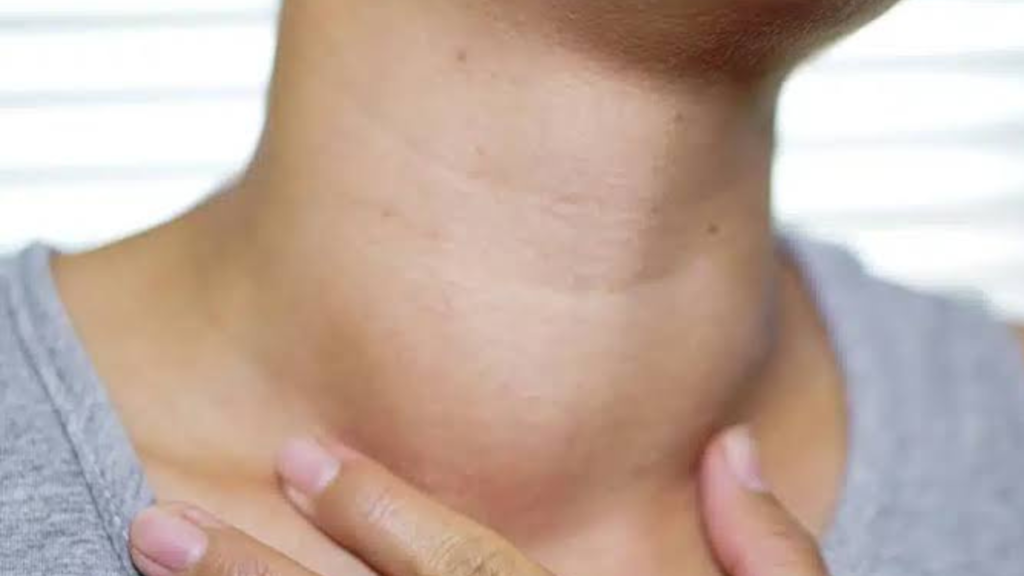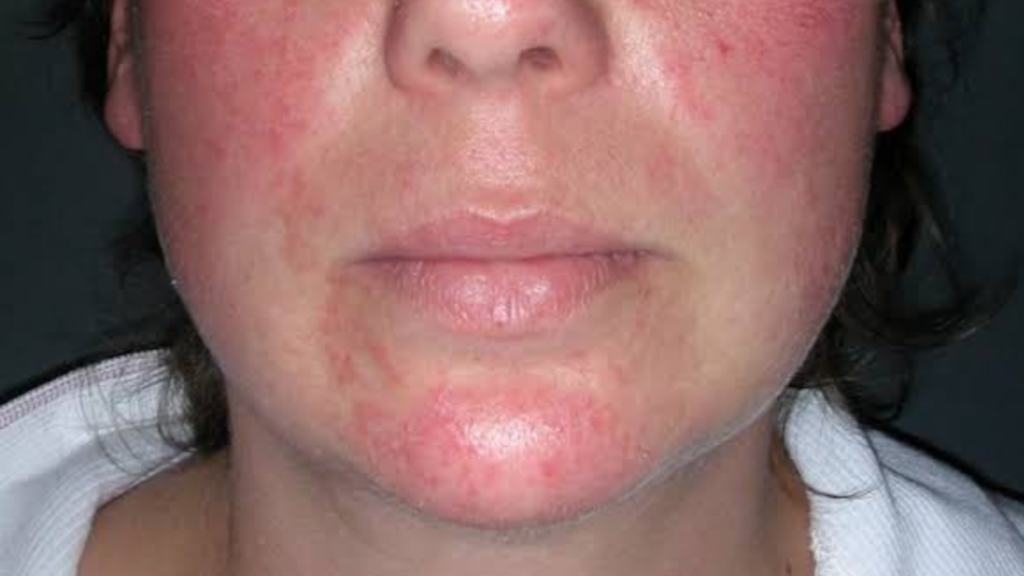The health of our nails can often serve as a mirror to our overall well-being. While peeling nails may seem like a minor issue, it can sometimes indicate underlying health problems, including thyroid disorders.
Both hyperthyroidism and hypothyroidism are known to affect nail health, causing symptoms like nail peeling, ridges, and brittleness. In this blog post, we will dive into the connection between thyroid disorders and nail health, with a focus on causes, symptoms, and solutions. Let’s dive in.
Key Takeaways:
- Peeling nails can indicate underlying thyroid issues, such as hyperthyroidism or hypothyroidism.
- Hyperthyroidism: Causes peeling, soft nails, and onycholysis (detached nails).
- Hypothyroidism: Leads to brittle, slow-growing nails with discoloration or ridges.
- Thyroid-related nail ridges can appear as horizontal (Beau’s lines) or vertical ridges.
- Improving thyroid nail health involves managing thyroid levels, proper nail care, and a nutrient-rich diet.
- Skin rashes, such as hives or dry patches, may also occur alongside thyroid disorders.
- Always consult a healthcare provider if you notice persistent nail or skin changes linked to other thyroid symptoms.
Table of Contents
Overview
Thyroid disorders impact millions of people worldwide, with symptoms ranging from fatigue and weight changes to skin and nail abnormalities. The thyroid gland plays a vital role in regulating metabolism and maintaining the balance of hormones essential for various bodily functions.
When thyroid function is disrupted, it can affect the growth and appearance of nails. Peeling nails, ridges, or brittle nails might indicate thyroid-related issues, especially if they occur alongside other symptoms like hair loss or skin changes.
Learn more from here and here.
Hyperthyroid Nails: Why Are My Fingernails Peeling?
Hyperthyroidism, a condition characterized by an overactive thyroid gland, can significantly impact nail health. When the thyroid produces excessive hormones, the metabolism accelerates, leading to rapid turnover of skin and nail cells. This imbalance can weaken the structure of the nails, causing:
- Peeling or splitting nails: Known as onychoschizia, this occurs when the outer layers of the nail separate.
- Soft and thin nails: Excessive thyroid hormones can reduce nail strength, making them more prone to damage.
- Detached nails (Plummer’s nails): In severe cases, the nails may lift off the nail bed, a condition called onycholysis. This often begins with the outer edges and can be painful.
Peeling nails due to hyperthyroidism may also be accompanied by symptoms like tremors, weight loss, and increased heart rate. Addressing the thyroid imbalance is key to improving nail health.
For more information, check here and here.
Thyroid Nail Ridges
Nail ridges are another common sign of thyroid dysfunction, both in hyperthyroidism and hypothyroidism. These ridges can appear as:
- Horizontal ridges (Beau’s lines): Indicate periods of disrupted nail growth, often linked to systemic illnesses, including thyroid disorders.
- Vertical ridges: While often harmless and associated with aging, pronounced vertical ridges may sometimes signal nutritional deficiencies or thyroid-related changes.
Why do these ridges form?
Thyroid hormones regulate the growth of keratin, the protein that makes up nails. Hormonal imbalances can disrupt the smooth production of keratin, leading to visible ridges on the nail surface.
How to Fix Thyroid Nails
Improving the appearance and health of thyroid-affected nails requires addressing the root cause: thyroid imbalance. Here are some tips to fix thyroid nails:
Medical Treatment
- Manage thyroid levels: Consult with an endocrinologist to ensure your thyroid hormone levels are within the normal range.
- Supplements: If a nutrient deficiency is contributing to nail problems, your doctor may recommend supplements like biotin, zinc, or iron.
Nail Care Tips
- Moisturize your nails: Use cuticle oils or creams to hydrate and strengthen brittle nails.
- Avoid harsh chemicals: Limit exposure to nail polish removers containing acetone, which can further dry out nails.
- Keep nails short: Trimming nails reduces the risk of peeling and breakage.
Dietary Changes
- Increase protein intake: Protein-rich foods like eggs, fish, and nuts provide the building blocks for healthy nails.
- Focus on thyroid-friendly nutrients: Include iodine, selenium, and omega-3 fatty acids in your diet to support thyroid function.
Lifestyle Adjustments
- Stress management: Chronic stress can exacerbate thyroid problems. Practice relaxation techniques like yoga or meditation.
- Stay hydrated: Proper hydration supports healthy skin and nails.
Consistency is key when implementing these strategies. With time, your nails can regain their strength and appearance.
For more details, check here.
Hypothyroidism Nails Pictures





Hypothyroidism, a condition where the thyroid gland underproduces hormones, can also take a toll on nail health. Unlike hyperthyroidism, hypothyroidism slows down metabolism, leading to slower nail growth and a range of symptoms such as:
- Brittle and dry nails: A hallmark of hypothyroidism, caused by reduced hydration and nutrient supply to the nail bed.
- Pale or yellowed nails: Poor circulation and slower cell turnover can result in discolored nails.
- Splinter hemorrhages: Tiny blood spots under the nails, linked to hypothyroidism-related vascular changes.
Hypothyroidism nails often appear dull and lackluster, reflecting the body’s slowed metabolic processes. Below are examples of hypothyroidism-affected nails (hypothetical visual description for readers):
- Nails with deep horizontal ridges and a brittle texture.
- Pale, discolored nails with signs of peeling at the edges.
- Enlarged, irregular cuticles indicating slower nail growth.
Thyroid Skin Rash Pictures




Thyroid disorders don’t just affect nails—they can also cause skin changes, including rashes. Both hyperthyroidism and hypothyroidism can lead to skin issues due to altered metabolism and immune responses.
Skin Rashes in Hyperthyroidism
- Heat sensitivity: Causes redness and irritation.
- Hives (urticaria): An immune reaction linked to autoimmune thyroid disorders like Graves’ disease.
Skin Rashes in Hypothyroidism
- Dry, scaly patches: Reduced thyroid hormones lead to dry and flaky skin, often accompanied by itching.
- Myxedema: Severe hypothyroidism can cause thickened skin and swelling, especially on the legs and feet.
Hypothetical skin rash pictures (visual descriptions for readers):
- Red, raised hives clustered around the neck and chest.
- Scaly patches with a cracked texture, commonly seen on the elbows and knees.
Skin rashes caused by thyroid disorders require targeted treatment, often involving moisturizers, antihistamines, or thyroid hormone replacement therapy.
Early Warning Signs Your Thyroid is in Trouble
- Fatigue or low energy levels
- Sudden weight changes (gain or loss)
- Hair thinning or hair loss
- Dry, brittle nails and hair
- Sensitivity to cold or heat
- Mood changes (anxiety or depression)
- Swelling in the neck (goiter)
- Irregular or heavy menstrual cycles
FAQs: How Your Thyroid Can Affect Your Hair, Skin, and Nails
Does Thyroid Make Your Skin Peel?
Yes, thyroid disorders can cause skin peeling. Hypothyroidism leads to extremely dry and flaky skin, while hyperthyroidism can cause thin, sensitive skin prone to peeling or irritation.
How Do You Know if Your Skin is Affected by Your Thyroid?
- Persistent dryness and flakiness
- Swelling or puffiness, especially in hypothyroidism
- Red, irritated, or itchy skin (hives in hyperthyroidism)
- Thickened skin, especially on the lower legs (myxedema)
Which Fruit Is Not Good for the Thyroid?
- Goitrogenic fruits: Strawberries and peaches are examples. These can interfere with thyroid function if consumed excessively, especially when raw, in people with iodine deficiency or hypothyroidism.
What Part of the Body Itches with Thyroid Problems?
- Hypothyroidism: Generalized itchiness due to dry skin.
- Hyperthyroidism: Hives or itching commonly affect the neck, face, and chest due to increased sensitivity and immune responses.
Which Vitamin Is Not Good for the Thyroid?
- Excess iodine (found in some multivitamins): Can worsen thyroid dysfunction.
- Vitamin A in high doses: May interfere with thyroid hormone metabolism.
- Always consult a doctor before supplementing.
What Lotion Is Good for Thyroid Dry Skin?
- Ceramide-based moisturizers: Help restore the skin barrier (e.g., CeraVe).
- Urea or lactic acid lotions: For severe dryness and flakiness.
- Hypoallergenic options: Avoid lotions with fragrances that can irritate sensitive skin.
What Is the One Thing You Should Be Eating for Your Thyroid Every Morning?
- Iodine-rich foods: A boiled egg or iodized salt in your breakfast helps support thyroid function. For those with autoimmune thyroid issues, selenium-rich foods like Brazil nuts are excellent choices.
Related:
- When to Worry About Thyroid Nodules?
- How to Shrink a Goiter Naturally
- Exercise After Radiofrequency Ablation
- Can You Live Without a Thyroid?
- What Should TSH Levels Be After Thyroid Cancer?
- How Fast Do Thyroid Nodules Grow?
- How Do I Know If My Thyroid Nodule is Benign?
- What Are the Symptoms of Cancerous Thyroid Nodules?
- Is TIRADS 3 a Treatment?
- Thyroid Ultrasound: Normal vs. Abnormal Findings
- What Foods Reduce Thyroid Nodules?
- What is a TIRADS Category 6?
Conclusion
Peeling nails, ridges, and other nail abnormalities can be distressing, but they often serve as important signals of underlying health conditions, including thyroid disorders. Understanding the link between your thyroid and nail health can empower you to seek appropriate care and make lifestyle changes to restore your nails’ strength and beauty.
If you suspect a thyroid issue based on nail or skin symptoms, consult a healthcare provider for accurate diagnosis and treatment. By managing your thyroid health, you can significantly improve not only your nails but also your overall quality of life.
Remember, your nails are more than just cosmetic—they’re a window into your body’s internal health. Pay attention to their changes, and don’t hesitate to act.
Reference
- Philip, Rajeev; Sivaraman, Sarojiniyamma Cheradiyil; John, Shalu Mariam1; Sankaran, Keshavan Charamel1. Dirty nails in hyperthyroidism. Thyroid Research and Practice 13(1):p 47-48, Jan–Apr 2016. | DOI: 10.4103/0973-0354.168877
- Cohen B, Cadesky A, Jaggi S. Dermatologic manifestations of thyroid disease: a literature review. Front Endocrinol (Lausanne). 2023 May 12;14:1167890. doi: 10.3389/fendo.2023.1167890. PMID: 37251685; PMCID: PMC10214500.
- Malan M, Dai Z, Jianbo W, Quan SJ. Onycholysis an early indicator of thyroid disease. Pan Afr Med J. 2019 Jan 17;32:31. doi: 10.11604/pamj.2019.32.31.17653. PMID: 31143336; PMCID: PMC6522173.
- Takasu N, Seki H. Plummer’s Nails (Onycholysis) in a Thyroid-stimulation-blocking Antibody (TSBAb)-positive Patient with Hypothyroidism. Intern Med. 2018 Oct 15;57(20):3055-3056. doi: 10.2169/internalmedicine.0809-18. Epub 2018 May 18. PMID: 29780134; PMCID: PMC6232039.
- Safer JD. Thyroid hormone action on skin. Dermatoendocrinol. 2011 Jul;3(3):211-5. doi: 10.4161/derm.3.3.17027. Epub 2011 Jul 1. PMID: 22110782; PMCID: PMC3219173.
- Onyiriuka AA, Atamah CC, Onyiriuka L. Plummer’s nail (onycholysis) in an adolescent Nigerian girl with hyperthyroidism due to Graves’ disease. Int J Child Adolesc Health. 2013;6:345–349.
- Villalta D, D’Aurizio F, Da Re M, Ricci D, Latrofa F, Tozzoli R. Diagnostic accuracy of a new fluoroenzyme immunoassay for the detection of TSH receptor autoantibodies in Graves’ disease. Auto- Immun Highlights. 2018;9(1):3. doi: 10.1007/s13317-018-0102-4.
- Arabatzis M. Hypothyroidism-related onycholysis with Aureobasidium pullulans colonization successfully treated with antifungal therapy. Clin Exp Dermatol. 2012;37(4):370–373. doi: 10.1111/j.1365-2230.2012.04347.x.
